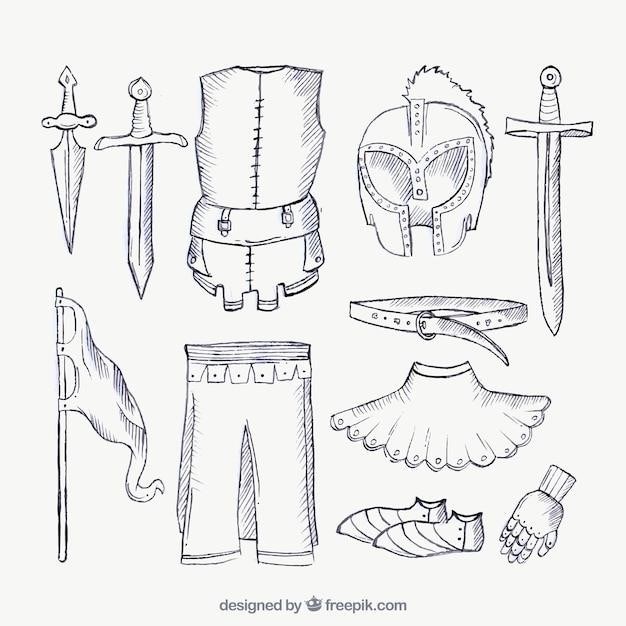
505 Bus Schedule PDF⁚ Your Guide to Finding the Right Information
Navigating public transportation can be a challenge‚ especially when you’re unfamiliar with the routes and schedules. This guide will walk you through the process of finding the right 505 bus schedule information‚ whether you need it for offline use or real-time updates.
Understanding the 505 Bus Route
The 505 bus route‚ often referred to as the Atlantic City-Margate-Longport bus‚ is a vital transportation link in the New Jersey area. Operated by NJ Transit‚ it connects various locations‚ including Atlantic City‚ Margate‚ and Longport‚ providing essential travel options for residents and visitors alike. The route features multiple stops‚ covering a significant distance within the region. Its extensive network serves as a convenient and reliable mode of transportation for those commuting to work‚ school‚ or simply exploring the area.
To fully understand the 505 bus route‚ it’s crucial to consider its key characteristics‚ such as its operating hours‚ frequency of service‚ and the specific destinations it connects. This knowledge will help you plan your trips effectively‚ ensuring you reach your destination on time. Whether you’re a frequent rider or a first-time user‚ grasping the details of the 505 bus route is essential for a smooth and efficient travel experience.
505 Bus Schedule PDF⁚ Downloading for Offline Use

In today’s digital age‚ having access to information at our fingertips is a common expectation. However‚ relying solely on internet connectivity for bus schedules can leave you stranded when a connection is unavailable. That’s where the convenience of a downloadable 505 bus schedule PDF comes in. This offline resource provides a reliable backup for planning your travel‚ ensuring you have the necessary information even when you’re off the grid.
Downloading a PDF schedule offers several advantages. First‚ it eliminates the need for a live internet connection‚ making it ideal for situations where internet access is limited or unavailable. Second‚ it allows you to access the schedule from anywhere‚ whether you’re on the go or at home. Third‚ it provides a readily available reference‚ eliminating the need to search online for the information. Whether you’re traveling for leisure or commuting‚ having a 505 bus schedule PDF downloaded on your device ensures you’re prepared for any scenario‚ making your journey smoother and less stressful.
Real-Time Bus Tracking for 505
While a downloaded PDF schedule offers a static snapshot of the 505 bus routes and times‚ real-time bus tracking provides a dynamic and up-to-the-minute view of the bus’s location and estimated arrival times. This technology is a game-changer for commuters and travelers seeking a more accurate and reliable way to plan their journeys.
Real-time bus tracking‚ often integrated into mobile apps‚ utilizes GPS technology to pinpoint the bus’s current location and track its progress along the route. This allows users to see exactly where the bus is in real-time‚ eliminating the uncertainty of waiting at a bus stop and guessing when the next bus will arrive. The apps also typically provide estimated arrival times‚ giving users a clear idea of when the bus is expected to reach their stop. This feature is incredibly helpful for those who need to catch a connecting bus or have a tight schedule‚ ensuring they don’t miss their ride.
Additionally‚ real-time bus tracking can provide valuable information about potential delays‚ allowing users to adjust their plans accordingly. It can also help users identify alternative routes or stops if their chosen bus is experiencing delays or is out of service. This level of real-time information empowers users to make informed decisions and optimize their travel plans.
Finding the 505 Bus Stop Near You
Knowing the exact location of the 505 bus stop near you is crucial for efficient travel planning. Fortunately‚ several resources can help you locate the nearest stop with ease. One of the most convenient options is to use online mapping services like Google Maps or Apple Maps. These platforms allow you to enter your current location or an address and search for nearby 505 bus stops. The map will display the stops‚ their addresses‚ and often include additional information like accessibility features.
Alternatively‚ you can consult the official website of the transit authority that operates the 505 bus route. These websites often provide detailed maps of the entire route‚ including the locations of all stops. They may also offer a search function where you can input your address or a specific landmark to locate the closest stop.
Mobile apps dedicated to public transportation are another valuable tool for finding bus stops. These apps often integrate with real-time data‚ providing accurate and up-to-date information on the location of stops‚ as well as bus arrival times. Some apps may also allow users to save their favorite stops for quick access‚ making it even easier to find the 505 bus stop near you.
505 Bus Schedule PDF⁚ Specific Route Variations
The 505 bus route might offer different variations depending on the time of day‚ day of the week‚ or even the specific season. These variations can affect the stops along the route‚ the frequency of service‚ and the overall travel time. It’s essential to understand these variations to ensure you’re using the correct schedule for your intended trip.
For example‚ some 505 bus routes might have express variations that skip certain stops‚ offering a faster commute during peak hours. Others might have weekend or holiday schedules that differ from weekday service. Additionally‚ specific routes could have seasonal adjustments‚ such as adding extra service during tourist seasons or reducing frequency during less busy periods.
To identify the specific route variation you need‚ pay close attention to the details on the bus schedule PDF. Look for headings or labels that clearly indicate the time of day‚ day of the week‚ or any other relevant information. You might also find a legend or key that explains the different route variations‚ such as “Express Service” or “Weekend Schedule.” Understanding these nuances ensures you’re planning your trip based on the correct schedule for your needs.
505 Bus Schedule PDF⁚ Weekly and Daily Service
The 505 bus schedule might operate with different frequency and service patterns throughout the week and even the day. Understanding this can be crucial for planning your trip effectively.
Weekday service usually has a higher frequency compared to weekend service. This means that buses might run more frequently on weekdays‚ making it easier to catch a ride during peak hours or for commuting purposes. On weekends‚ the service might be reduced‚ with longer intervals between buses. It’s important to check the schedule for the specific day of the week you’re traveling to avoid surprises.
Additionally‚ the 505 bus schedule might have different variations for specific times of the day. For instance‚ there might be a rush hour schedule with increased frequency and more direct routes to accommodate the higher volume of passengers during commuting hours. Later in the day‚ the service might be reduced‚ with longer intervals between buses. Be aware of these daily variations and plan accordingly for your intended travel time.
505 Bus Schedule PDF⁚ Finding Additional Information
While the 505 bus schedule PDF provides a basic overview of routes and timings‚ it may not encompass all the details you might need for a smooth journey. For instance‚ you might need to know about potential service disruptions‚ fare information‚ or accessibility features. Fortunately‚ there are several ways to find this additional information.
The transportation authority that operates the 505 bus service is a valuable source of information. Their website usually provides a comprehensive overview of routes‚ schedules‚ fares‚ and service updates. You can also find contact information for their customer service department‚ allowing you to ask specific questions or report any issues.
Another useful resource is the transportation authority’s mobile app‚ which can provide real-time information on bus locations‚ estimated arrival times‚ and any service disruptions. The app also often includes features like route planning and fare payment‚ making it a convenient tool for your journey. Remember to check the app’s availability and features before your trip.
505 Bus Schedule PDF⁚ Alternative Resources
While official sources are excellent‚ you can tap into a wider network of resources to find information about the 505 bus service. These alternative resources can provide supplementary details‚ user experiences‚ and even real-time updates.
Online forums and communities dedicated to public transportation in your area can be a treasure trove of information. Users often share their experiences‚ tips‚ and insights on specific routes‚ including the 505. You can find information on potential delays‚ alternative routes‚ and even user-generated maps that highlight key stops or points of interest.
Third-party apps like Moovit or Google Maps can also be valuable tools for planning your 505 bus journey. These apps often integrate with transportation authority data to provide real-time information‚ including bus locations‚ estimated arrival times‚ and even service disruptions. They also offer features like route planning and fare comparisons‚ making them comprehensive tools for your travel needs.
505 Bus Schedule PDF⁚ Using Mobile Apps for Real-Time Information
In today’s digital age‚ mobile apps have become indispensable for staying informed and efficient. When it comes to navigating the 505 bus route‚ several apps can provide real-time information to make your journey smoother.
The NJ Transit Mobile App‚ designed for the New Jersey Transit system‚ offers a wealth of information for riders. You can find schedules‚ track buses in real-time‚ and even receive notifications about service disruptions or delays. This app allows you to plan your trip‚ anticipate potential delays‚ and avoid unnecessary waiting time.
Moovit is another popular app that provides real-time bus tracking‚ allowing you to see the exact location of your 505 bus. You can also use Moovit to plan your journey‚ find nearby bus stops‚ and get directions. The app integrates with public transportation data across various cities‚ making it a versatile tool for travelers.
Google Maps is also a great option‚ especially if you’re familiar with its interface. It can provide you with real-time bus locations‚ estimated arrival times‚ and even alternative routes if there are delays.
505 Bus Schedule PDF⁚ Contact Information for Further Assistance
While online resources and mobile apps offer a wealth of information‚ there may be times when you need additional assistance. If you encounter issues finding the 505 bus schedule‚ have questions about specific routes‚ or need clarification on service details‚ there are reliable ways to seek help.
For the NJ Transit 505 bus route‚ you can contact the NJ Transit Customer Service Center for inquiries. Their dedicated phone line‚ accessible 24/7‚ provides direct support and answers to your questions.
You can also reach out to NJ Transit through their website. They have a dedicated section for customer service‚ where you can submit inquiries‚ provide feedback‚ or report issues. This method is especially useful for non-urgent inquiries or detailed questions that require a written response.
If you’re seeking assistance with the 505 bus route in Boston‚ the MBTA (Massachusetts Bay Transportation Authority) provides customer service through their website and phone line. Their website offers a comprehensive FAQ section‚ while their phone line is available during regular business hours for immediate support.
505 Bus Schedule PDF⁚ Accessibility Information
Ensuring that public transportation is accessible to everyone is crucial. The 505 bus route‚ like many others‚ prioritizes accessibility for riders with disabilities. This commitment is reflected in various features and services designed to facilitate a comfortable and inclusive travel experience.
For the NJ Transit 505 bus route‚ accessibility is a key consideration. The buses are equipped with ramps and designated areas for wheelchair users‚ ensuring easy entry and exit. The bus stops along the route are also designed with accessibility in mind‚ featuring ramps or curb cuts for wheelchair access.
The MBTA 505 bus route in Boston similarly prioritizes accessibility. Their buses are equipped with wheelchair lifts‚ allowing for smooth boarding and disembarking for passengers using wheelchairs. The MBTA website also provides information about accessible bus stops‚ including details on curb ramps and other features that make it easier for people with disabilities to access the bus.
Additionally‚ both transit authorities have programs and initiatives to assist riders with disabilities‚ including real-time information about bus arrival times and accessibility features at specific stops. This information is often available through their mobile apps and websites‚ making it easier for riders to plan their trips.
505 Bus Schedule PDF⁚ Additional Resources for Planning Your Trip
Beyond the 505 bus schedule PDF‚ numerous resources are available to enhance your travel planning‚ ensuring a smooth and convenient journey. These resources provide comprehensive information‚ real-time updates‚ and helpful tools to optimize your travel experience.
For the NJ Transit 505 route‚ the “MyBus” feature offers real-time information about bus arrival times at your chosen stop. Accessing this information is easy through the NJ TRANSIT Mobile App‚ by selecting your route or stop number‚ or by using the online form on the NJ Transit website. Bookmarking your stop ensures quick access to future updates.
The MBTA 505 bus route in Boston also offers real-time information through their mobile app and website. You can track the bus’s location in real-time‚ get estimated arrival times‚ and even receive notifications about delays or cancellations.
In addition to these real-time resources‚ both transit authorities offer trip planners on their websites. These tools allow you to input your starting point and destination‚ and they will provide you with suggested routes‚ travel times‚ and potential connections‚ making it easy to plan your entire journey.
Remember‚ staying informed and utilizing these resources will make your 505 bus trip more efficient and enjoyable.

















